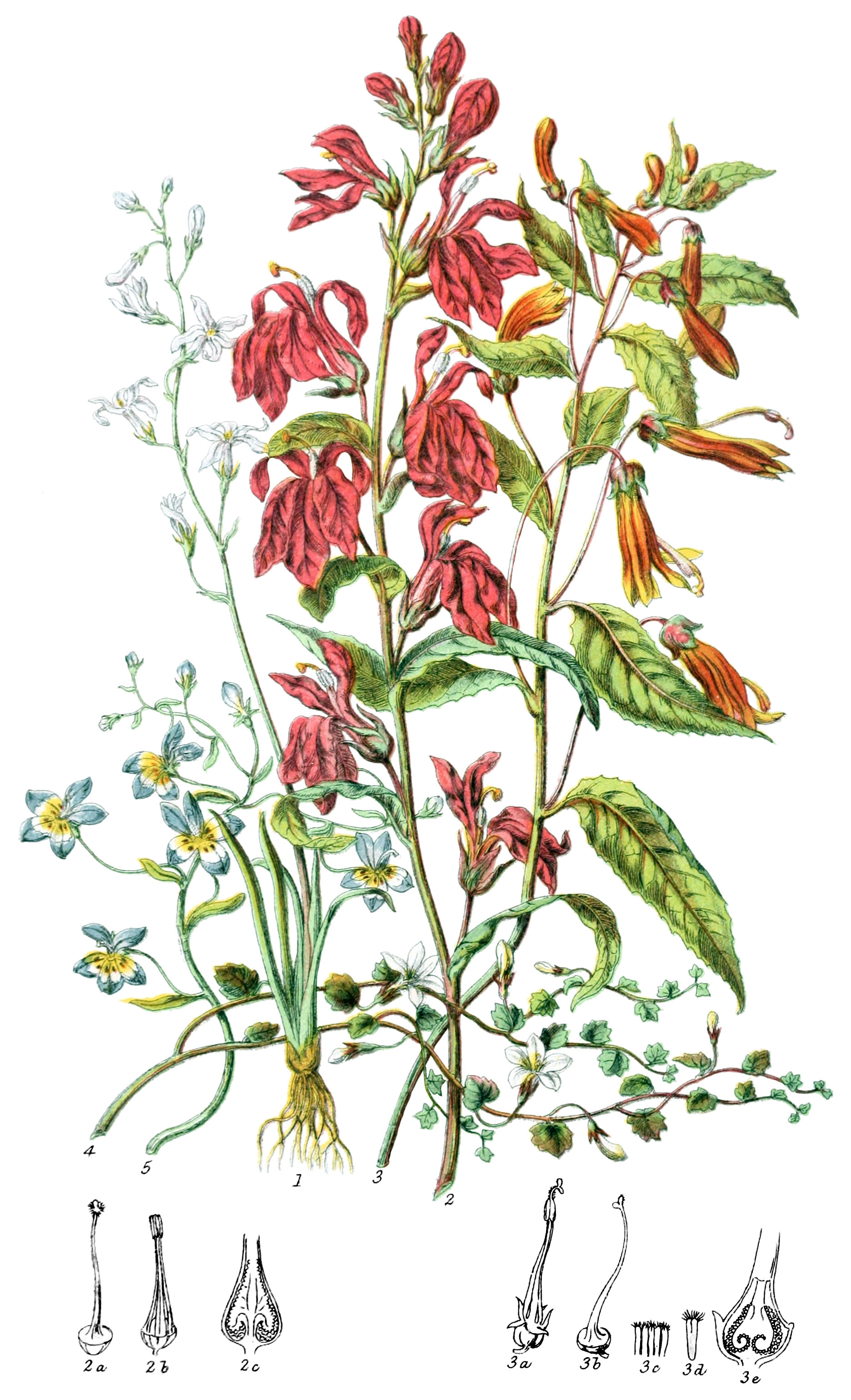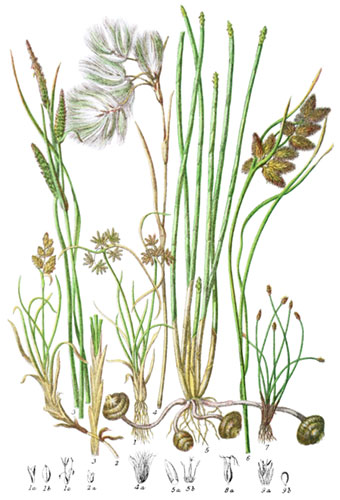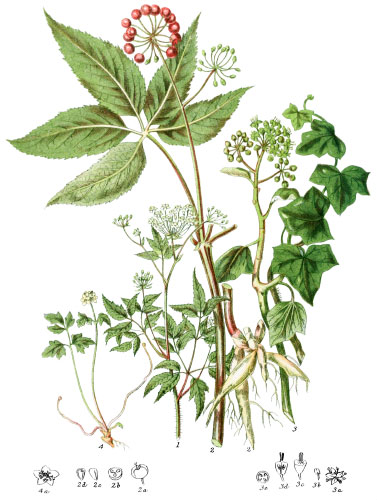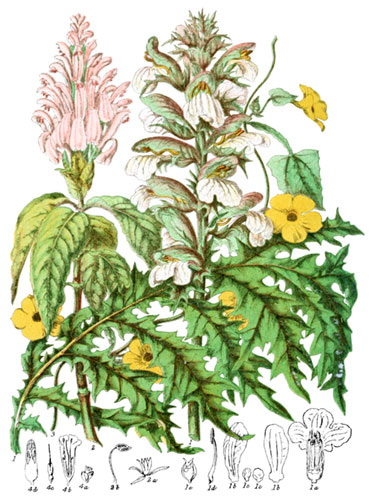Key characteristics
Shrubs, and herbaceous plants, having an acrid milky juice. The leaves are alternate, without stipules. The flowers grow at the ends of the branches, or from the base of the leaf-stalk. The calyx is above the ovary, five-lobed or entire; the corolla is formed of one petal inserted into the calyx, irregularly five-lobed or deeply cleft, and sometimes split down nearly to the base, allowing the pistil and stamens to protrude. The stamens are five, inserted into the calyx alternately with the lobes of corolla; the anthers cohere in a tube around the pistil. The ovary is below the calyx, with from one to three cells, containing numerous ovules, the styles is single, surmounted by a stigma having a cup-like fringe. The fruit is a capsule, with one or more cells, containing many seeds, attached either to the central axis, or to the lining of the seed-vessel, gaping at the summit; the seeds contain fleshy albumen.
These plants have most affinity with Campanulaceæ; the anthers being united in a tube form a connecting link with the Composite tribe.
A milky juice of excessive acridity exists throughout the Tribe; in some species it contains caoutchouc.
Select plants in this order
Not all plants listed are illustrated and not all plants illustrated are listed.
- Lobelia was named by Pohl, in honour of Lobel, a Fleming, who was appointed botanist to James I., and died in London 1616. This is one of the first instances of a plant receiving the name of a living person, and one who was not associated with its discovery. The genus contains several brilliant species, which are highly ornamental to the flower-garden, althougth nearly all contain a considerable portion of deleterious juice, some species so much as to be poisonous, others are of value medicinally in their native countries.
- Lobelia Dortmanna (1) is the most delicately graceful of the British species, occurring only in a few situations, but there abundantly, as in the shallow borders of Windermere, and the lake of Glencoe, Scotland. The leaves proceed chiefly from the root, and are divided internally by a longitudinal partition into two cells.
- L. urens, of Devonshie, grows on heaths and commons in neighbourhood of Axminster; the whole plant is milky and extremely acrid, the juice blistering the skin; the flowers are of a bluish purple colour. This species belongs also to France and Spain.
- L. cardinalis was the first foreign specimen introduced to our gardens from North America: it was soon found to be sufficiently hardy to bear the English climate, and was generally cultivated, but has since been surpassed in beauty by L. splendens (2), one of the numerous beautiful plants discovered by Humboldt in Mexico.
- The lowly little species L. littoralis (4), is a humble contrast to those of America, not only in form of growth, but the flowers are destitute of their bright colouring.
- L. inflata is used as a medicine in North America, though dangerous if taken in too large quantities.
- L. excelsa is probably one of the finest species of the tribe, rising to the height of twelve or fifteen feet in its native country of Nepal, the lower leaves are a foot in length.
- L. rosea, of the same region, bears numerous beautiful rose-coloured flowers.
- L. debilis was discovered by the younger Linnæus at the Cape of Good Hope.
- L. camporum inhabits fields in Brazil.
- L. nana forms part of the vegetation in the highest region of flowering plants on the Andes, at an elevation of 12,000 feet.
- L. chinensis is a creeping plant in the neighbourhood of Canton.
- L. ramosa adorns the plains bordering the Swan River with its bright blue flowrs; thus every division of the globe contributes some species to the genus.
- The flower of Siphocampylos has a curved tube.
- S. bicolor (3) is an elegant plant, flowering freely.
- S. caoutchouc yields a small supply of glutinous substance from the milky juice.
- Clintonia (5) very nearly resembles Lobelia.
- The corolla of Isotoma is parted into nearly equal segments.
- I. longiflora is of so poisonous a nature as to cause the death of horses that feed on it in S. Domingo and Spain.
- Tupa Feuillæi of Chile is supposed to be the most injurious of the Tribe; the odour of the flowers alone producing sickness.
- The only wholesome plant is probably Centropogon surinamensis, the succulent fruit of which is said to be eatable.
Locations
The plants of this Tribe abound in the West Indies, in Brazil, at the Cape of Good Hope, along the range of the Himalaya, and in the Sandwich Isles; they also exist in considerable numbers in Chile and in New Holland. Two speices of Lobelia extend to Britain.
Legend
- Lobelia Dortmanna, Water Lobelia. Britain.
- Lobelia splendens, Splendid Lobelia. Mexico.
- Pistil.
- Stamens.
- Section of Ovary.
- Siphocampylos bicolor, Two-coloured Siphocampylos. Georgia.
- Stamens and Pistil.
- Pistil.
- Stamens.
- Stamen.
- Section of Ovary.
- Lobelia littoralis, Shore Lobelia. New Zealand.
- Clintonia pulchella, Pretty Clintonia. Colombia.
Explore more
Posters
Decorate your walls with colorful detailed posters based on Elizabeth Twining’s beautiful two-volume set from 1868.
Puzzles
Challenge yourself or someone else to assemble a puzzle of all 160 botanical illustrations.





